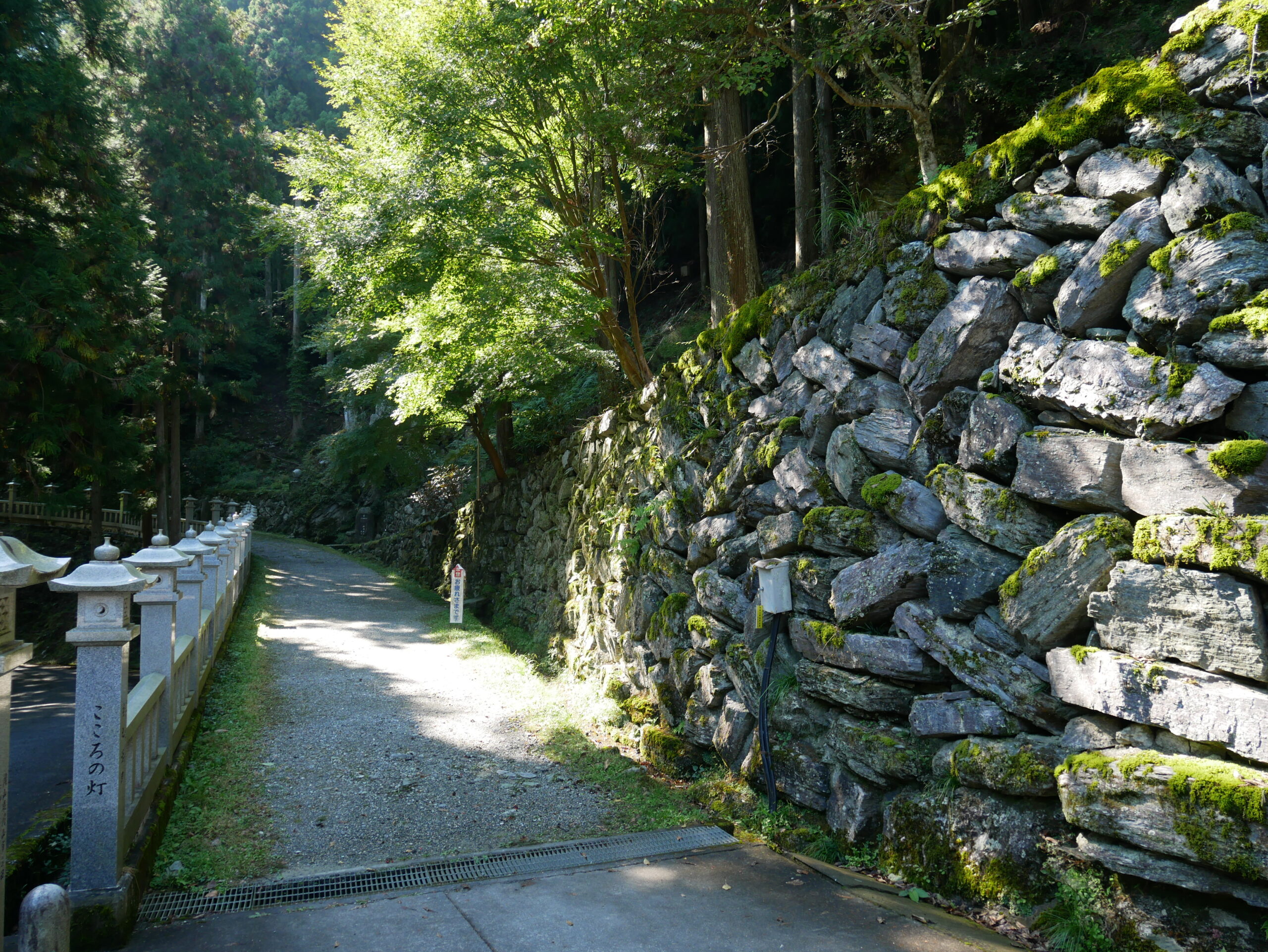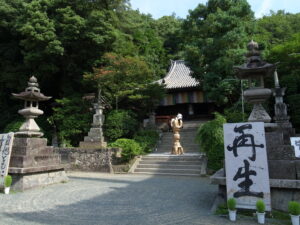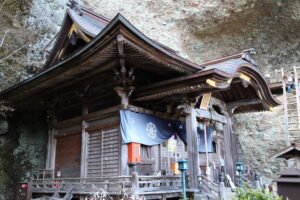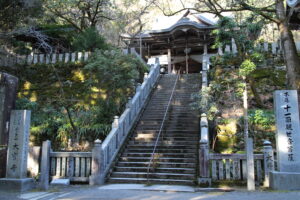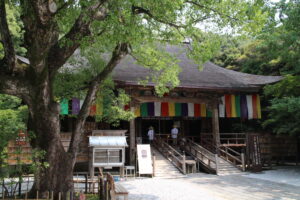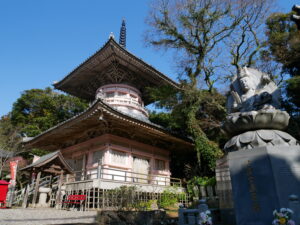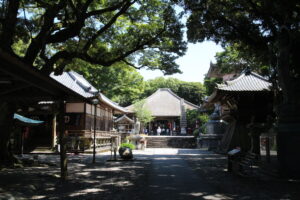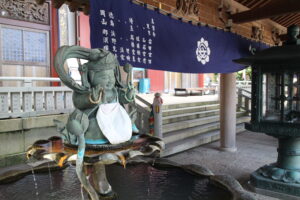The challenge of the long mountain path to Shosan-ji makes arriving all the sweeter, and its staggering natural settings make it a truly unforgettable stop on the Shikoku Henro.
Shosan-ji’s Origins and History
According to legend, Shosan-ji was founded by the En the Ascetic, the wild practitioner widely-venerated as the founder of Shugendo, a unique Japanese tradition of mountain asceticism which includes elements of both Buddhist and indigenous Shinto practices. Get a glimpse inside the mysterious world of Shugendo in this NHK Documentary. The mountain was known as the home of a terrible serpent who caused storms and floods that destroyed villages below the peak. A century later, Kukai realized the incredible potency of this sacred mountain and determined to pray there himself. The infuriated serpent set the whole mountain on fire—the origin of Shosan-ji’s name, which means “Burnt Mountain Temple.” Protected by the Buddhas, Kukai walked unharmed through the flames and locked the serpent in a crack in a huge boulder near the top of the mountain. Pilgrims with extra time and energy can climb the steep path to the mountain peak and see this impressive rock formation, as well as the mountaintop chapel where Zao Gongen, the deity of the mountain, is enshrined with the peaks of the Tsurugi Mountain Range as a backdrop.
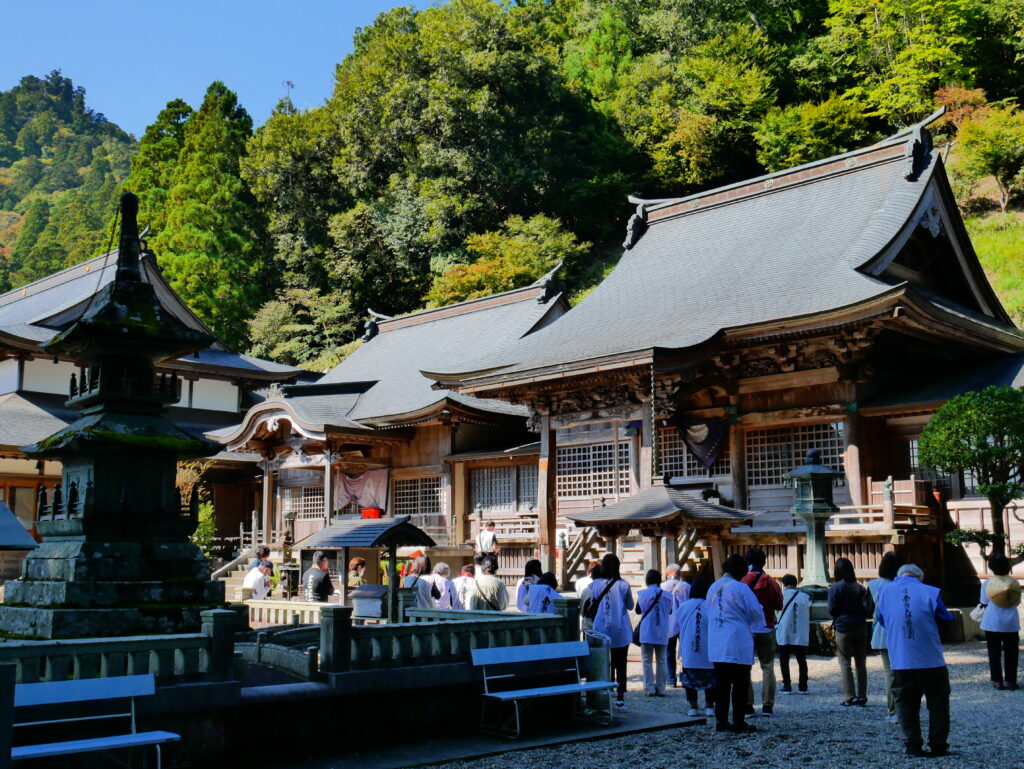
What to See at Shosan-ji
It’s about a ten-minute walk from Shosan-ji’s parking lot to the temple. The trail is lined with incredible stone statues of the Thirteen Buddhas, the enlightened beings responsible for guiding the deceased safely into their next life. Opposite is a long series of stone lanterns, each bearing the names of their donors. At several points on the way to the temple the forest gives way to incredible views—on a clear day you can see all the way to the Pacific Ocean. The foot of the staircase below the temple gate offers a glimpse of the rugged peak at the heart of the story of the temple’s founding. Passing through the gate you’re greeted by titanic cedar trees guarding the path up to the main hall. The Main Hall and Daishi Hall are beside one another at the top of a final stone staircase. To the right of these is a Shinto shrine where 12 local deities are venerated, a vestige of Shosan-ji’s long tradition of syncretism between Buddhism and Shinto.
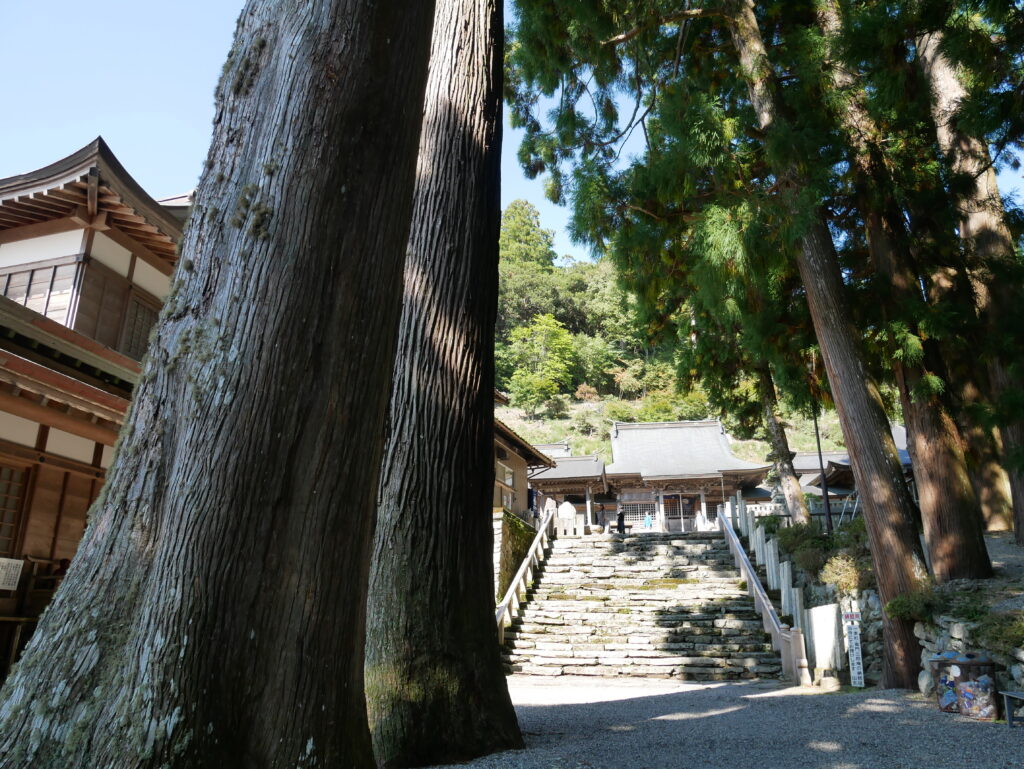
Discover Shōsan-ji with Shikoku Tours
Few places on the Henro feel as earned—or as sacred—as Shōsan-ji. Surrounded by towering cedars and mountain silence, the temple radiates a quiet power that stays with pilgrims long after they descend. After your visit, ease tired legs and reflect on the journey at a local hot spring—Kamiyama Onsen offers the perfect retreat in the same lush valley. Whether you’re ready for the full mountain ascent or prefer a supported route, our expert guides ensure your time at Shōsan-ji is safe, meaningful, and deeply restorative. With Shikoku Tours, the mountain welcomes you—and the comfort that follows is well earned.

